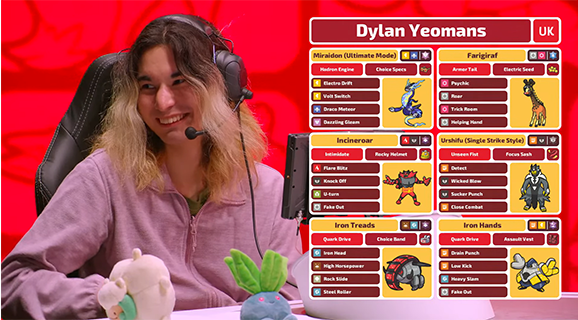The Pokémon Company is continuing to reveal new details regarding the 2025 Pokémon Championship Series. Read on below to learn more:
Big battles are coming to the Big Easy!
The 2025 North America International Championships (NAIC) return to New Orleans on June 13 to 15, providing one last chance for players to earn precious Championship Points before Worlds in August.
It’s sure to be a major test for the competitors, who will be using the Regulation I format, where each team can include a maximum of two restricted Pokémon—the strongest Legendary Pokémon available.
With so much on the line, fans should expect to see star players, awesome battles, and plenty of drama when the matches begin on Twitch.tv/Pokemon.
To get ready for the event, players Joe Ugarte and Aaron Traylor, along with Pokémon VGC commentator Lou Akcoş-Cromie, chatted with Chris Shepperd of Pokemon.com. Find out about the players and Pokémon (don’t miss Joe’s top five Pokémon pairings) to watch so you’re ready for all the action!
Shepperd: OK, let’s get started! I was going to lead with talking about the format and metagame like usual, but this time I’d like to start by talking about where we are in the Championship Series schedule.
This year, with the changes made to the format for Worlds invitations, does that put different pressure on players at NAIC? With so much CP on the line that could move players into Worlds invite territory, does that change how people approach the event?
Akcoş-Cromie: Yes, there has always been pressure, but it is different now because you’re not just competing with your own CP count, but other peoples’ as well. Before you had to get a specific amount of CP to qualify, and now you have to maintain a position in the rankings. For example, in EU, the top 75 players (plus the auto qualifications from winning events) will qualify. So for EU players, if you’re going to NAIC and you’re close to that cutoff, it’s going to be extra intense. The same mentality applies if you’re not going, but some of your closely ranked competitors are!
Traylor: I mean, the race is definitely on. The “top 75” system is a strange and foreign pressure compared to the bar from the last few years. Only the people who have lots and lots of points really know they’re safe, and everyone else is in this weird grey area.
Akcoş-Cromie: NAIC really will be the last chance opportunity for a lot of players. As well as having auto invites for the top placements, it can really set a tone for Worlds.
Shepperd: We’ve talked previously about how NAIC could be less climactic when players simply had to hit a bar. It sounds like the intensity will be ratcheted up this year!
Akcoş-Cromie: It will be a different energy, but still one that’s very exciting and full of anticipation.
Ugarte: I think NAIC will have a lot of storylines to follow this year between qualifications, top player individual storylines, and maybe some new faces performing well.
I feel like this year has had the largest variety of consistent top players and new players performing well at events.
Shepperd: Do players have individual goals as they go into an event like this? Winning is always the capital-G goal, but do you also have a “I need to finish at least here” threshold in mind?
Akcoş-Cromie: Yes, a lot of players will be aware of how many points they need to secure positions, etc. They should also be aware of what their opponents need to overtake them too and can keep an eye on their progress in the season to adjust accordingly.
Ugarte: As a player, I can tell you that my personal goal is centered around performing the best I possibly can, and I’m sure it will be the same for a lot of top players in a more secure position on the leaderboard.
Traylor: A lot of people need to do very well in order to place in that top 75, which might require 950–1000 Championship Points or more to achieve.
There are not that many points available, especially as many players near the top have competed in five Regional Championships or International Championships already. So the most intense rounds from a Worlds qualification perspective are probably going to be the ones just as top cut starts. There might be a couple of Hail Mary runs as players who had no shot with top 75 suddenly try to make it all the way by placing in the Top 4.
Akcoş-Cromie: We’ve seen some newcomers shine on the international stage before and suddenly make finals, etc., so for some Trainers, those Cinderella stories might come true.
Shepperd: Does it affect what team you might play? Like, a comfortable player might be more daring?
Traylor: I find that focusing on “I need to finish at least here” for Championship Points can be an unhelpful mindset. In my opinion, it’s healthiest to focus on playing well in your games. Focusing on CP is not going to support that goal.
Ugarte: I think typically everyone has a unique team-building process, but one thing I learned is that pressure can bring about either the best or worst team-building decisions. I think most players will opt to play things they are familiar with or understand better.
I also think going into events with less mental pressure helps considerably in these intense races.
Traylor: There is a lot with regards to CP points and qualification that is out of players’ control. Luckily, what is in their control is the Pokémon that go on their team and moves those Trainers click during battle.
Shepperd: Lou, earlier you mentioned some newcomers on the scene who are grabbing a lot of spotlight. Who do you have in mind?

Akcoş-Cromie: Dyl Yeomans recently had their big break out performance at EUIC this year, finishing runner up—and Tim Edwards was runner up the year before. These Trainers had not really been featured before on the broadcasts, nor attended international events, but then they just dominated through most of the tournament. Very impressive and memorable as storylines and inspiration points.
Shepperd: Is there something about this year that is bringing out a new wave of players? Or is this just cropping up organically?
Akcoş-Cromie: I think they’ve cropped up more since open team sheets.
Ugarte: I think as the size of tournaments increases, you’re going to see more new players rise to the top. I also think the game is very friendly for new players nowadays.
Akcoş-Cromie: The US had a few regional winners who appeared at their first event and took the title—Justin Tang for example.
Ugarte: Another thing is, information and resources nowadays in the community are so detailed and refined that I think it’s so much faster and easier to get through the early stages of learning the game and improving.
I remember starting in 2017 and the landscape of competitive Pokémon being so different when it came to figuring out good teams, how to play, and learn the game.
Shepperd: Let’s keep going with some of the players to watch for and what they’re doing to stand out.
Traylor: Joe Ugarte, unironically! I think the place I would like to start otherwise, because it’s the North America International Championships, is Shiliang Tang. He masterminded the team that swept Milwaukee, the first Regional of the format, and is consistently innovating as a team builder.

Ugarte: Thanks Aaron! I definitely also agree that Shiliang is someone to keep an eye out for. The teams he builds are typically very strong, and one of the most relevant teams that won Milwaukee was made by him.
Akcoş-Cromie: I’d love to talk about Michael Kelsch from Germany. He went runner-up and Top 4 in consecutive Worlds, and this season defended his Regional title in Stockholm. He’s just come off Utrecht winning the Special Championship there. He has more than proved the caliber of his play at Regionals and Worlds, but I believe that the Internationals stage is where he still needs that top tier accomplishment.
Traylor: Shiliang cut Worlds in 2024. The conversation definitely just can’t be left at team building.
Yep, Michael just won his second Regionals of the season. I’m pretty sure the only people to have done that before were Gavin Michaels, Justin Tang, and Wolfe Glick. I’m not sure about Europe.
Akcoş-Cromie: I love to watch Shiliang play, and his team building is so insightful.
Ugarte: I also think you have to talk about Marco Silva and Wolfe Glick, easily two of the most entertaining stories to follow this season, and insanely accomplished players. And both won an International Championship this season!

Akcoş-Cromie: Wolfe is just on another level. I know we talk about him every time but his mentality to the game that he’s worked hard on over the past few years has to be applauded. The way he is able to take breaks and return to tournaments (often winning them) with a fresh and rejuvenated focus is something I’ve always been impressed by.
Ugarte: I think he had a noticeable shift in his approach to events recently, and it’s paid off a lot. Most top players go to pretty much every major event happening. Wolfe is a bit more selective, and I think it gives him more room to breathe and develop his ideas on his own time, I think there’s some big takeaways there too.
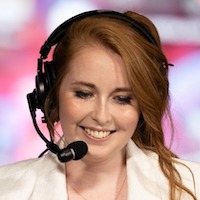
Akcoş-Cromie: At EUIC this year, Wolfe really showcased what Koraidon can do, and now we see it cropping it up more and more in the double restricted format. He often raises talking points behind the caster desk with his team-building choices, and I’m looking forward to seeing what he thinks will be the call for NAIC. I also think he is the secret seventh Pokémon on his team, because his intuition and analysis when he plays is something truly special.
Shepperd: Who are the EU players to watch for then? Lou, you mentioned Michael Kelsch.
Akcoş-Cromie: He is just so incredibly consistent. You have to have him on your bingo card for the event.
Ugarte: Besides Marco Silva, who I already mentioned, I think Federico Camporesi is a player to mention, having won a Regional this season as well as the final Grand Challenge of the season.
Traylor: Eric Rios and Alex Gómez, too. They work very hard.
Akcoş-Cromie: Yes, and Gómez has won it before.
Ugarte: I think Alex Gómez and Eric Rios are very ambitious builders, and they definitely commit to an approach and take risks in team building that others wouldn’t.
Fede has had some solid placements in Pokémon Scarlet and Pokémon Violet, being able to place Top 4 at the World Championships in 2023. He’s not a stranger to the big stage at all.
Akcoş-Cromie: In terms of gameplay, though, Eric is one of those players who can make a game go to time through methodical switches and defensive plays, waiting for the perfect opportunity to strike and gain momentum.
I know Team Italy have also been trying hard this season to make Terapagos work, but it’s still waiting for the big win. I wonder if they will push for the Terapagos dream for one last ride or decide to change it up for NAIC.
Shepperd: And the players from Japan who always throw a curveball at the metagame. Are there any players to watch for from there?
Ugarte: Shohei Kimura loves traveling internationally to a bunch of events, so I wouldn’t be shocked to see him there at all.

Traylor: Thinking about Japanese players’ (or players from other Asian countries) attendance at NAIC is interesting. It’s the last shot for them to get an automatic invite if they didn’t get one from their home country circuit. But many of the players who would want to play in Worlds and feel confident about their chances of making Top 4 at NAIC may already have invites from their home regions. How many will make the trip?
Ugarte: We did also see a Japanese qualification through EUIC Top 4, which was pretty cool. So even though its hard, it is a viable route for an invite.
Traylor: Did Shohei qualify to top 64 of the Pokémon Japan Championships?
Akcoş-Cromie: I’m not sure who is making the trip, but the Thailand Master Ball League was won by Anousak Jung with a Dondozo team, which I didn’t think we would see for a while. So I will keep an eye out to see if they will be competing!
Ugarte: I believe so.
Traylor: Well, here’s an interesting segue. Joe pointed this out to me last night—this is the first time that NAIC falls the week before the Japanese national tournament. Usually, it is the week after.
The Japan Championships has altered the course of American Pokémon history more than a lot of players know. But now there isn’t that signal to work off of!
Ugarte: Yeah, it seems like a small logistics change, but will likely make a huge impact on the metagame.
Japanese teams have typically provided inspirations for some of the strongest teams in the format previously, and without that influence being there, a few things might change from that.
Shepperd: OK let’s finally get to the Pokémon part of the Pokémon North America International Championships. I think we’ve covered all the other words.
We’re cuddling back under the warm blanket of the two-restricted system, but despite being a pretty well-practiced format, the metagame continues to shift pretty heavily.
Traylor: Double restricted is back, and the metagame is progressing in a lot of interesting ways!
Ugarte: I don’t think the meta will be “solved” until Worlds, and even after, there will likely still be room for innovation.
Traylor: I’m not sure we’d solve it if we had a whole year with it; when Regulation G came back, everyone was sure that teams would be really boring. And we saw a lot of exciting stuff happen over the course of January to April!
There are some developments that I’m interested in from Utrecht, such as Roaring Moon / Kyogre / Ice Rider Calyrex.
Ugarte: I think there are five main pairings to look out for so far. The top five I’ve found to be most impactful are:

Miraidon
+
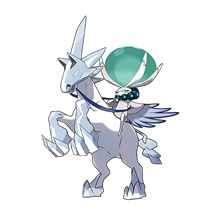
Ice Rider Calyrex

Miraidon
+
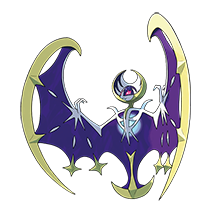
Lunala
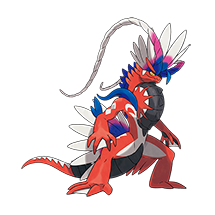
Koraidon
+

Ice Rider Calyrex

Zamazenta
+
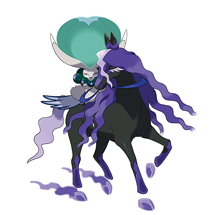
Shadow Rider Calyrex
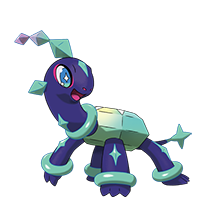
Terapagos
+

Shadow Rider Calyrex
The last two lean a lot more into a balanced and defensive playstyle, while the first three are a bit more aggressive.
Traylor: I think there is sooo much room for variation though.
Ugarte: That being said, we have seen an increase in play for Leftovers Grimmsnarl and Leech Seed Ice Rider Calyrex, which leans a bit more defensively.
Akcoş-Cromie: There’s already been changes from Milwaukee to Utrecht. For example, Ursaluna dropped substantially from its Top 8 finish in Wisconsin. And even though a lot of people like to say that EU have more standard teams than NA, we still had an unexpected Sneasler, Entei, and Zacian finish Top 8.
Traylor: There are about 10 or 11 restricted Pokémon strong enough to build a consistent team around, and then you can combine most of them. There are about 40 or 50 combinations that I think are worth players at least looking into.
Ugarte: Never really expected to see Leech Seed Ice Rider Calyrex turn into a serious meta adaptation, but it makes sense the more I see it played.
Akcoş-Cromie: I am happy we got to see it in action a few times! I don’t know if it will fully catch on though.
Ugarte: I definitely think that there are many viable combinations for sure. That is one unique part of this format—you have to account for a lot.
Traylor: Leech Seed Ice Rider Calyrex was used by Darsh Patel in Top 16 of Milwaukee. It was also used by Shohei Kimura, Arubega, and Candy in the Japanese online qualifying tournament—pretty natural point in metagame progression for it to tear through Utrecht. We’ll see if it continues to work at NAIC. I’m with Lou, it’s hard to see it having a lasting impact.
Akcoş-Cromie: We also saw a few Trainers try to shake things up with Miraidon, going for Assault Vest and Snarl with Electric Tera Type, whereas it’s normally Fairy Tera Type with Choice Specs. I’m not sure how effective the variations were compared to the standard Miraidon, but you can see the experimentation being made before the big IC. Testing it out before NAIC perhaps?
Traylor: Miraidon loves not having to do all of the damage work on a team like it did in Regulation G.

Ugarte: I think where Leech Seed provides value is it allows Ice Rider Calyrex to flip one of its worst restricted matchups, Zamazenta, in its favor.
I think it was definitely funny how we had a whole meta progression in Regulation G switching from Electric– to Fairy– Tera Type Miraidon, then returning to Electric Assault Vest for the first Regulation I event.
Akcoş-Cromie: I did think that too, Joe—back to basics!
Shepperd: What you’re telling me is this metagame is wide open. Is there such a thing as a safe bet here? If so, what Pokémon pairing would it be?
Ugarte: It definitely is wide open, Chris! I think that’s what makes it so engaging. I think the five pairings I mentioned earlier are pairs that have general usage and proven success, which means that if you’re lost, you have some solid starting points or ideas you can use.
Akcoş-Cromie: Lunala and Miraidon are solid choices. But the way Ho-Oh and Zamazenta usage is growing, I honestly expect to see a variety at NAIC. There will also always be Trainers trying to make their favorite or reliable former partners from past restricted formats work, like Groudon or Kyogre.
I agree with Joe, too. Those are good pairings to keep an eye on for sure, and they work well with various different regular Pokémon, too.
Ugarte: Honestly, might be controversial, but I think Ho-Oh might be a little fraudulent in this format and will likely be stuck trying to replicate its early success. BUT I would be happy to be proven wrong.
Akcoş-Cromie: I have been surprised by it too! But it’s sticking around. I think there will always be Ho-Oh believers now.
Traylor: Part of what excited me about Utrecht is that I think Kyogre is massively undervalued at this point in time. There are some legitimate issues it didn’t have in other formats, but I never feel comfortable betting against it.
I think Ho-Oh is way too “anti-meta” in its strengths.
Ugarte: I think Groudon definitely has a great place in the metagame, as Lou mentioned too. It has Ground typing and is very strong against a lot of the Electric Tera–Type Miraidon teams.
Akcoş-Cromie: I want to talk about the Ruinous Pokémon.
Shepperd: Talk about ’em!
Traylor: Ooh, great call, Lou.
Akcoş-Cromie: Chien-Pao and Chi-Yu are both really rising up in usage because of their Abilities. Sword of Ruin lowering Defense or Beads of Ruin lowering Special Defense can make already powerful restricted Pokémon do even more damage—you see a lot of one-hit KO’s when they are all in play together.
I might have run Choice Band Tera Ground Groudon at my recent local, Joe! With Gravity support, of course, because I don’t want to go gray-haired just yet!
Ugarte: Chien-Pao and Chi-Yu are very strong meta threats you always have to respect, and as you mentioned, increasing the damage of partner restricted Pokémon is super impactful in the format.
Your slots are more limited when you have two restricted Pokémon, so it’s important that everything has good role condensation and can really make an impact on the field.
Shepperd: Have people been sleeping on the Ruinous Pokémon? What is giving them new attention?
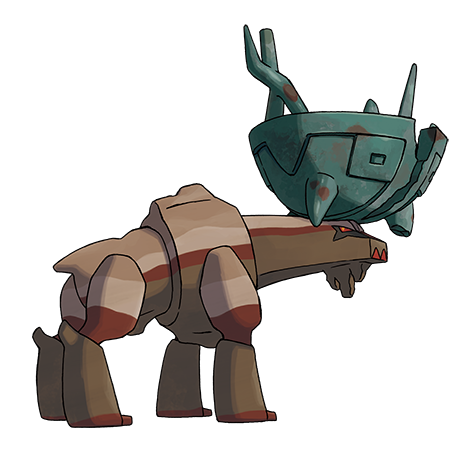
Ugarte: I think Chi-Yu has had the most attention consistently because of how easily it pairs with Koraidon, but Chien-Pao has been seeing usage creep up over time again.
Traylor: Ting-Lu is always in a fantastic position in the metagame as well. In my opinion, it’s more about whether players can make the pace that it wants to battle at (which is sloooooow) work for them.
Ugarte: It enables so many physical attacking restricted Pokémon to maximize their damage.
Traylor: If Leech Seed is on the table, Wo-Chien wants to hang out, too, potentially. I could see it inviting itself to the party.
Akcoş-Cromie: The Ruinous Pokémon always had good synergy on teams, I think, but they are just making a solid resurgence right now. Also, the rise of Prankster Pokémon like Grimmsnarl or Whimsicott means being a cheeky Dark-type is a big advantage!
Ugarte: Ting-Lu slows down games like crazy! And it’s Dondozo’s favorite partner besides Tatsugiri, at least in the past!
Akcoş-Cromie: And yeah Aaron, Wo-Chien always wants to hang out! I just don’t know who with…
Ugarte: Maybe it’ll meet up with its good friend Kyogre. They did get Top 8 together on Shiliang’s team at NAIC 2024!
Akcoş-Cromie: We saw a little Ting-Lu action in Utrecht, so it’s definitely out there.
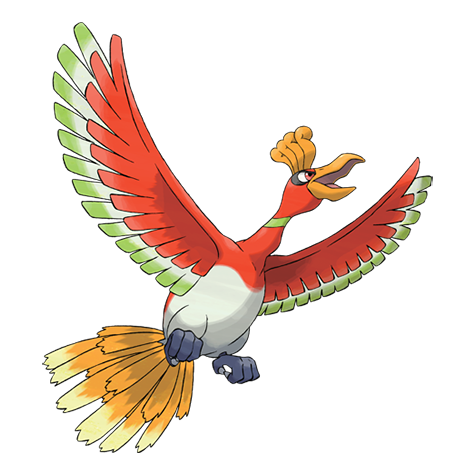
Shepperd: Speaking of defensive Pokémon, what does Ho-Oh do well that might not endure in the long run?
Traylor: Ho-Oh is great if you have lots of Pokémon that are weak to Fire-type and Flying-type attacks and can’t break through a Pokémon with that typing and high Special Defense. Think Shadow Rider Calyrex, Zamazenta, Incineroar, Rillaboom, Amoonguss….
Ugarte: It has a crazy high Special Defense and a nice typing that synergizes with Miraidon and Iron Treads, but that also is what limits it, in a way.
Traylor: But as the metagame diversifies—and that struggle becomes less true for lots of teams—its influence starts to wane.
Akcoş-Cromie: Ho-Oh is very bulky, and Regenerator gives it even more longevity in the match. But it damages itself with Brave Bird, and Sacred Fire is like playing with fire at times with its accuracy (it’s 95% but I sometimes feel like it’s only 5%).
Ugarte: When you have partners you are “required” to play with, it can make functioning well and progressing effectively with the meta harder.
Traylor: In comparison, Koraidon enables a lot of partners, and can be so strong with Life Orb, Tera Type Fire, and Flare Blitz in sunlight that it “breaks the type chart.” It’s not really a contest in terms of Abilities.
Akcoş-Cromie: Flying type is very nice. But Lunala with Meteor Beam and Cornerstone Mask Ogerpon with Ivy Cudgel (a combination that is doing very well right now) are also a challenge for Ho-Oh.

Traylor: So, Ho-Oh has a “niche.” But as a competitive player, I’m never in search of niches. I don’t want to find the one weird situation where a weird Pokémon works—I want to use good Pokémon that are good. And I’m willing to be flexible about what it means to be good, but I’m not willing to compromise on the idea that my Pokémon should work for me, not the other way around.
Akcoş-Cromie: Some Trainers thrive on it, though. I guess it’s a good case of different styles.
Shepperd: Has the field of non-restricted changed quite a bit, too? It’s a much broader question, so maybe we can discuss what players are trying to do teamwise to support their restricted Pokémon.
Ugarte: I would say that most of the non-restricted Pokémon we’re used to seeing succeed are still succeeding.
Traylor: I think the field of non-restricted Pokémon has changed!
Ugarte: Maybe with slight variations, mostly being Grimmsnarl having a huge impact.
Traylor: The utility that non-restricted Pokémon can bring to the table is being explored a little bit more in general.
Shepperd: I’m curious what you all have to say about Galarian Weezing’s surging role in the metagame.
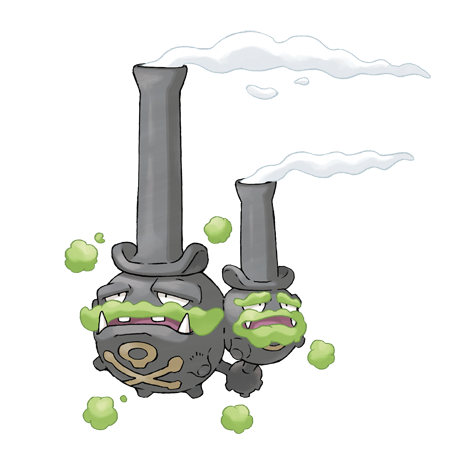
Ugarte: Galarian Weezing is my mortal enemy. Least favorite Pokémon to play against. We have beef.
Traylor: Yeah, we didn’t talk much about the most recent Melbourne Regional, but Masayoshi Kuroo won using a take on James Evans’ Shadow Rider Calyrex / Koraidon / Galarian Weezing team.
Ugarte: Galarian Weezing’s ability to turn off Protosynthesis and Quark Drive on switch-in is super impactful, along with not allowing weather change or other Abilities to activate when it’s on the field the whole time. Being able to switch in and turn off the Ruinous Pokémons’ Ability effects is also crazy.
Akcoş-Cromie: Galarian Weezing won in Thailand recently too! It was very popular in the previous regulation with Dondozo, but it still made an impact in certain regions in double restricted.
Akcoş-Cromie: I personally like the battle for best Grass type. Brute Bonnet, Amoonguss, Rillaboom, Whimsicott, Ogerpon—so many options! All with placements. A lot of Rillaboom in Melbourne compared to the others, for example.
Traylor: Brute Bonnet is enjoying its time in the sun!
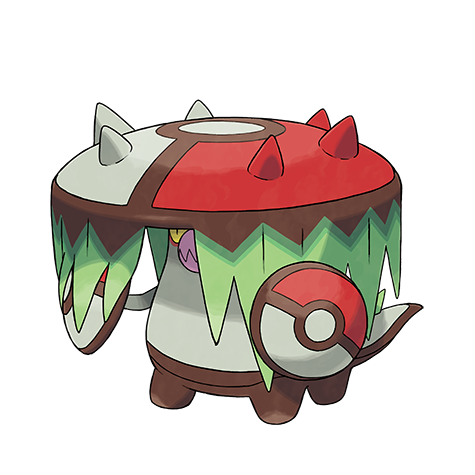
Akcoş-Cromie: I can never quite get over the fact it has a tail, though!
Traylor: Brute Bonnet has really, really, really insane defensive stats. It’s bulkier than Amoonguss itself before Protosynthesis kicks in, boosting one of its stats even further. The downside is it just doesn’t get free health back.
It took less of a spotlight compared to generally strong Paradox Pokémon like Flutter Mane and Iron Hands in Regulations B through F, but I would be shocked if it weren’t a mainstay of Regulation I.
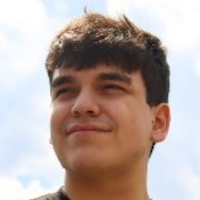
Ugarte: I think Brute Bonnet has been providing more value in the restricted formats over Amoonguss for a few reasons. As the power level increases, the value of Regenerator on Amoonguss is a bit less because it’s receiving so much damage; and the immediate defensive boost Brute Bonnet gets in sun makes it so much more threatening on a board in this format.
Akcoş-Cromie: Taking notes for NAIC… I have wondered why the mushroom battle has been so close lately.
Ugarte: Not to mention its typing is great to force defensive Terastallizing out of Shadow Rider Calyrex and Lunala.
Traylor: It’s funny, because Amoonguss actually threatens Brute Bonnet with the 4× effective Pollen Puff, and Brute Bonnet can’t do much back.
Ugarte: I definitely think that on sun teams, Brute Bonnet has mostly taken over Amoonguss’s role. But on teams with rain, Amoonguss is still more prevalent.
Shepperd: It’s good to hear that team construction still has a lot of pull with which Pokémon you include, not just sheer strength.
Got any predictions about the top Pokémon at NAIC?
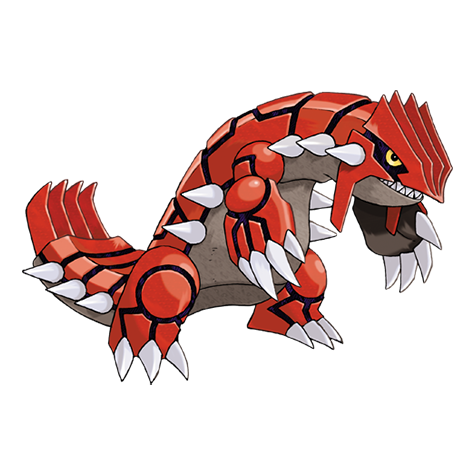
Ugarte: I think a Groudon team will perform very well because of how it’s placed in the metagame, especially with a bunch of Miraidon being around.
Traylor: Hmmm… I’m so interested in Trick Room in all its uses. I feel like it’s kind of fallen out of favor, outside of being a vanity pick on Leech Seed Calyrex. I think we’ll see more dedicated hard Trick Room and semi–Trick Room teams pick it up at NAIC!
Akcoş-Cromie: So… Gastrodon has done really well in past double restricted formats. I would naturally keep an eye on it.
But also, I think we will not see anything too spicy in terms of restricted Pokémon. The tournament is too important for anything too out of left-field. But I do expect to see some more unique choices in the support Pokémon.
Ugarte: I still dream about Jumpluff being good again, so I won’t crush your dreams.
Akcoş-Cromie: We just saw a Scraggy take runner-up in Thailand (Endeavor, Fake Out, Coaching, Eviolite) and honestly, I can imagine a rogue pick doing well. Maybe not winning the whole thing, but doing well.
Ugarte: I definitely think if we see any weird Pokémon, it will for sure be in a non-restricted slot. Usually in restricted formats, weird Pokémon can do well as partners in certain conditions.
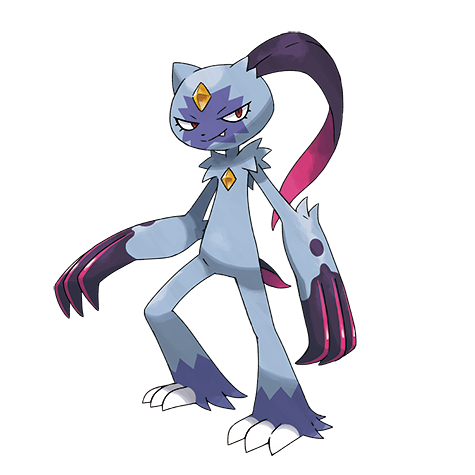
Akcoş-Cromie: Nikolaj Høj Nielsen just used Sneasler to earn a medal in Utrecht. It’s possible to see some unique choices.
Gastrodon is too busy dominating Pokémon GO right now, I guess!
Shepperd: OK, finally—how much will NAIC be a predictor for what we’ll see at Worlds?
Akcoş-Cromie: That’s a great question.
Ugarte: I think the meta will develop more in NAIC, but likely it will give us an idea of the more established, consistent archetypes that will be serious threats for Worlds.
Traylor: I think NAIC will be a development of our base for understanding what might happen at Worlds, along with the Pokémon Japan Championships (JCS).
Akcoş-Cromie: I agree with Joe. Worlds will always bring its own unique approach, but you’d be mad not to use NAIC as a prepping point for matchups and team-building inspiration.
Ugarte: I definitely think JCS will hugely contribute as well to things, and we will have to see how that pans out.
Akcoş-Cromie: Agreed. I love to see what JCS cooks up for their circuit.
Traylor: It’s kind of interesting to think about the quiet period between June and August where there are no events, but players are working very hard for Worlds. NAIC and JCS are really the last big public signals. After that, everyone is on their own.
Akcoş-Cromie: No events, but intense prep vibes.
Shepperd: OK, I think that about does it! Thanks again for another great discussion. There’s always a ton to learn, and yet there are still so many questions that can only be answered when NAIC is over.
Watch the Pokémon North America International Championships June 13–15 on Twitch.tv/Pokemon. For more Pokémon competition strategy and analysis, visit Pokemon.com/Strategy.
Joseph Ugarte

Joseph Ugarte is a full time VGC competitor and content creator. Competing since 2017, he has had three Top 4 placements in Internationals, two Worlds Top Cuts, and two Regionals wins, along with lots of other strong Regional finishes. He loves being involved in the community efforts to grow and expand the game further!
Aaron Traylor

Aaron Traylor has been competing in the VGC since 2011. He placed in the Top 8 and the Top 16 at the World Championships in 2016 and 2019, respectively. He believes that the friendship between Trainers and their Pokémon is ultimately what leads to success in battle. Outside of Pokémon, he is a graduate student studying computer science and cognitive science.
Lou Akcoş-Cromie

Lou Akcoş-Cromie has been an official Play! Pokémon commentator since 2017 and has been honored to cast multiple International and World Championships in her career so far. As the #1 East Sea Gastrodon fan, she is always excited to see her favorite Pokémon do well, but is also intrigued by off-meta picks that catch her by surprise! Outside of Pokémon, you can most likely find Lou surrounded by cats or teaching English and Debate in the school classroom.
Source: Pokemon.com and The Pokémon Company
Source:Pokémon



